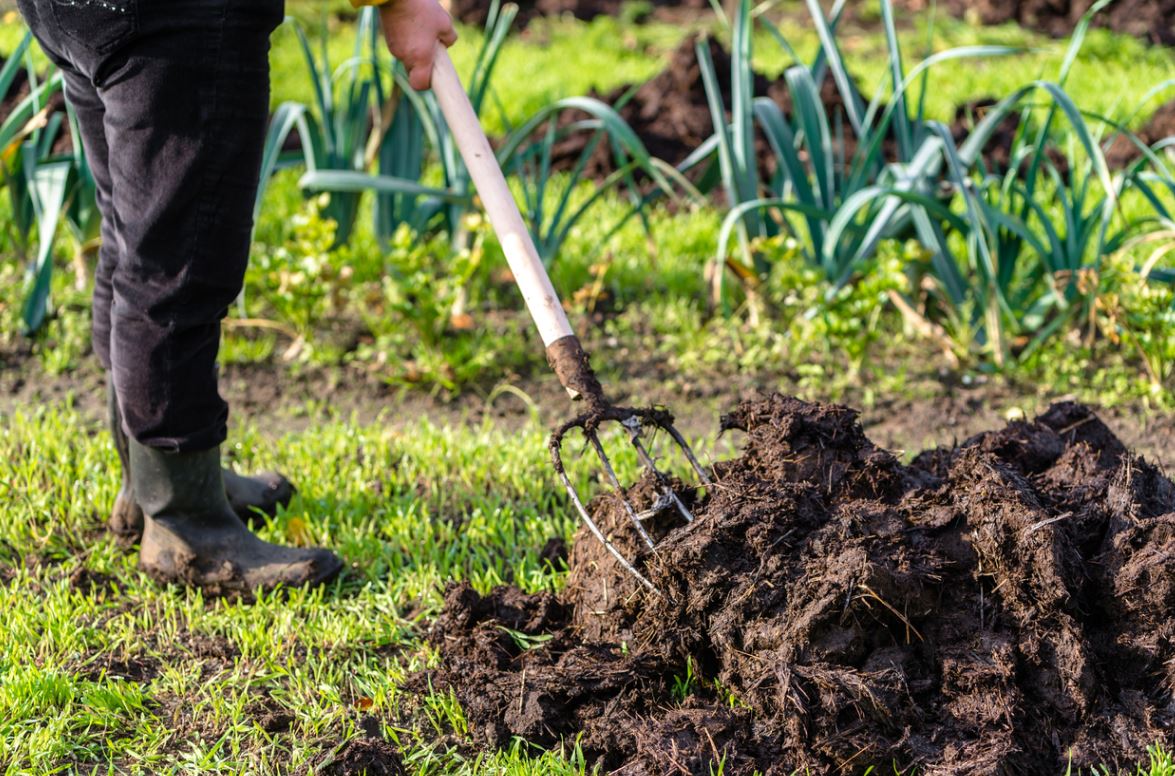Composting is the sanitation and enrichment of raw manure made pathogenic by residual animal by-products. It is in fact the transformation of plant matter and organic waste through controlled fermentation after a period of silage. All our tips to easily make it yourself.
Make a compost based on manure
Manure can be of bovine, caprine, sheep or equine origin. These last two sources (sheep and horses) seem to be the best, the manures being easier to compost. They must be straw, because only straw is a source of humus.
1. Silage (without air), called the impregnation phase.
The operation consists of piling up the manure in successive layers of a few centimeters. After each coat, powder with lithothamne (seaweed), water abundantly, then tamp down strongly.
The manure pile should not exceed a height of 50-60 cm (length and width do not matter). It can be stored for several months by covering it with straw, dry leaves or a tarpaulin. In the latter case, take care to place branches between the tarpaulin and the top of the pile to obtain air circulation.
2. Hot fermentation
Move the pile, shaking the manure vigorously to aerate it. On bare ground, at the chosen location, stretch two strings at a distance of 2.20 m. In the center, place two concrete blocks supporting horizontally placed logs (ventilation tunnel).
The pile of manure measures 2.20 m wide by a minimum of 5 m long and 1.60 m high: it takes more or less the shape of a triangle, its base being wider than the top. When the stirring is finished, cover the pile with 15 cm of straw or dry leaves, starting at the bottom. After a few days, the hot fermentation reaches a temperature of around 55 ° C.
3. Spreading
After three weeks, this still warm compost is good to spread at a rate of 200 to 250 kg / are, or 4 to 5 wheelbarrows. It can only be kept for a few weeks. Spreading is best done in the fall or at the end of winter.
Can we use raw manure?
The use of raw manure is not recommended, as it contains a multitude of germs eliminated by correct composting. Raw manure is often responsible for parasitism and various diseases.

Compostable materials
The compostable materials are: straw (basic element), wilted grass clippings, dried peelings of non-worm-eaten vegetables, unmounted seeded and wilted wild herbs, white sawdust (untreated), wood chips, dead leaves, (dry) waste from vegetables and flowers.
Near the coast: brown seaweed and chopped seaweed can be incorporated into the compost.
The incorporation of chopped and wilted nettles (not mounted to seeds), as well as waterings based on nettle manure, promote the decomposition of organic matter.
Make your compost in a small garden
The use of straw is imperative. In a sheltered place, stretch two strings separated by 0.60 m (width of the compost heap). Start by forming a bed of straw, then add a layer of green plant material. Sprinkle with lithothamne and nitrogen fertilizer (roasted horn, guano, feather), water and tamp down strongly.
The layers, watering and tamping are alternated until a height of 60 cm is obtained. The heap takes the form of a semi-circle, the length of which varies according to the input of organic matter. Once the operation is complete, cover it with a tarpaulin. It can be stored for 4 to 6 months.
A month and a half to two months before use, move the pile in the opposite direction between the strings, shaking it vigorously. For aeration, do not forget to place solid bricks and a few branches in the center of the pile. After a few days, the hot fermentation starts; it lasts from 3 to 5 weeks. Compost is good to spread when it is lukewarm.
Read also :









